What Is French Seam Meaning? A French seam is a sophisticated sewing technique renowned for its ability to achieve clean and polished finishes in garments.
It’s a method that encases raw fabric edges within the seam, preventing fraying and leaving a neat appearance on both the inside and outside of the fabric.
This technique is particularly valuable when working with delicate and lightweight materials like chiffon or silk, where minimizing bulk is essential.
French seams require a bit more effort and precision than conventional seams but are worth the investment for those seeking a professional and elegant touch in their sewing projects.
In this brief exploration, we will delve deeper into the intricacies of creating a flawless French seam in the world of sewing.
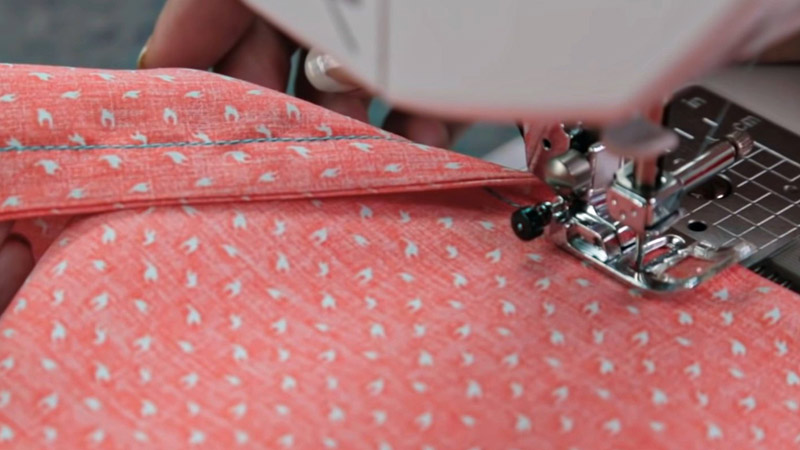
What Is French Seam in Sewing?
A French seam is a sewing technique known for its neat and durable finish. It is commonly used in clothing construction, especially for lightweight and sheer fabrics.
The main purpose of a French seam is to encase raw fabric edges within the seam itself, preventing fraying and creating a clean, polished look on both the inside and outside of the garment.
To create a French seam, you start by sewing the wrong sides of the fabric together with a narrow seam allowance, typically 1/4 inch (6mm). Then, you trim the seam allowance down to about 1/8 inch (3mm) and press the seam flat.
Next, you fold the fabric right sides together, enclosing the raw edges within the seam, and sew a second seam with a wider allowance, typically 3/8 inch (10mm). This effectively hides the raw edges and creates a tidy, enclosed seam.
French seams are especially useful for lightweight fabrics like chiffon and silk, as they minimize bulk and ensure a professional, elegant finish.
While they require a bit more effort than standard seams, the clean and polished results make them a valuable skill in sewing, particularly for creating garments with a high-quality, refined appearance.
How to Create a French Seam
Creating a French seam is a sewing technique that provides a clean and polished finish to your garments, especially when working with lightweight or delicate fabrics.
Here’s a step-by-step guide on how to create a French seam:
Materials you’ll need:
- Fabric pieces to be joined.
- Sewing machine or needle and thread.
- Iron and ironing board.
Steps:
Wrong Sides Together
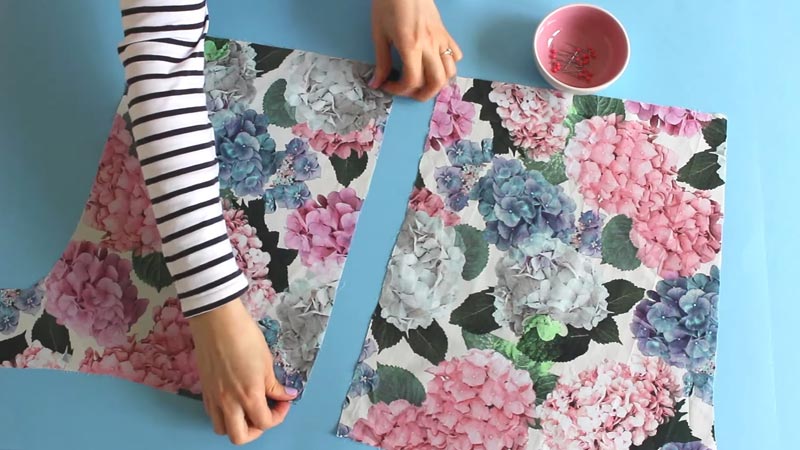
Begin by aligning the fabric pieces you want to join, ensuring that the wrong sides of the fabric are facing each other. The right sides of the fabric should be visible on the outer surfaces.
Narrow Seam Allowance
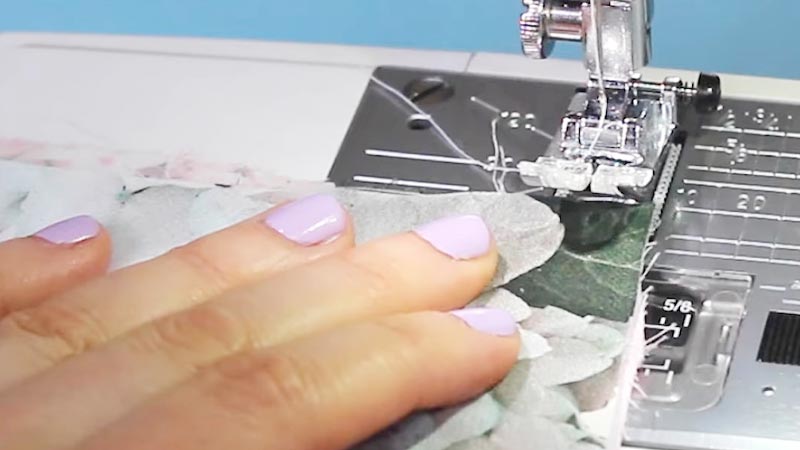
Set your sewing machine to a straight stitch or use a hand-sewing needle and thread. Sew along the edge of the fabric with a narrow seam allowance, typically about 1/4 inch (6mm). Remember to backstitch at the beginning and end of the seam to secure it.
Trim the Seam Allowance
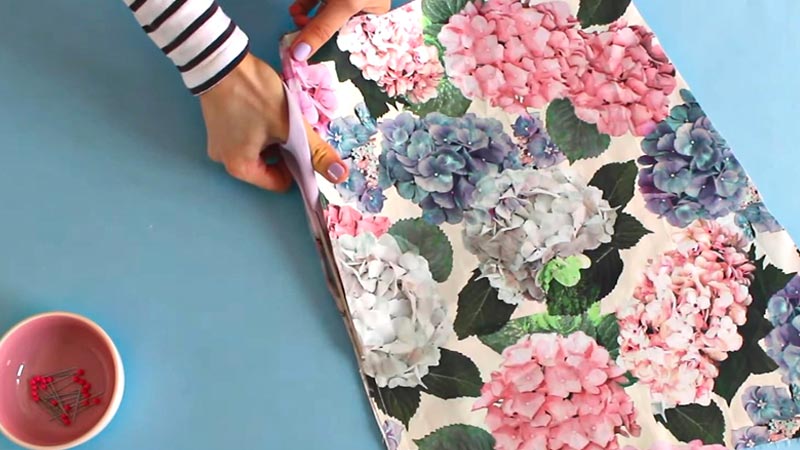
After sewing the initial seam, trim the excess fabric from the seam allowance using a pair of sharp scissors.
Reduce the seam allowance to approximately 1/8 inch (3mm). This step helps reduce bulk inside the finished French seam.
Press the Seam
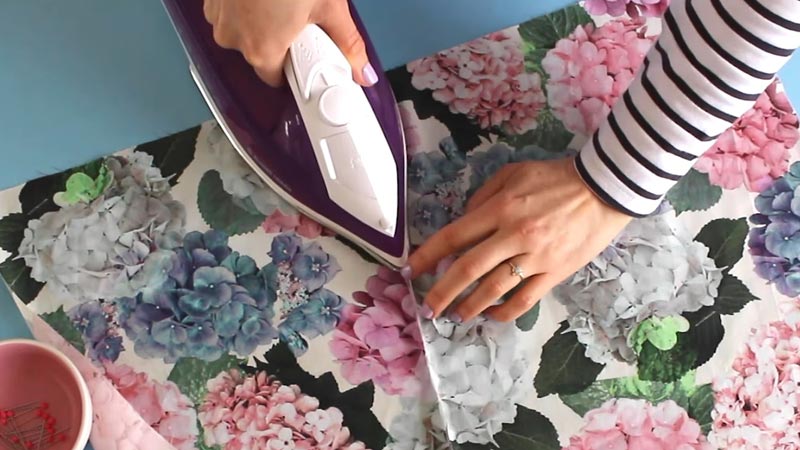
Open the fabric with the wrong sides out, and press the seam flat using an iron set to an appropriate temperature for your fabric. This pressing step sets the stitches and prepares the fabric for the next seam.
Right Sides Together
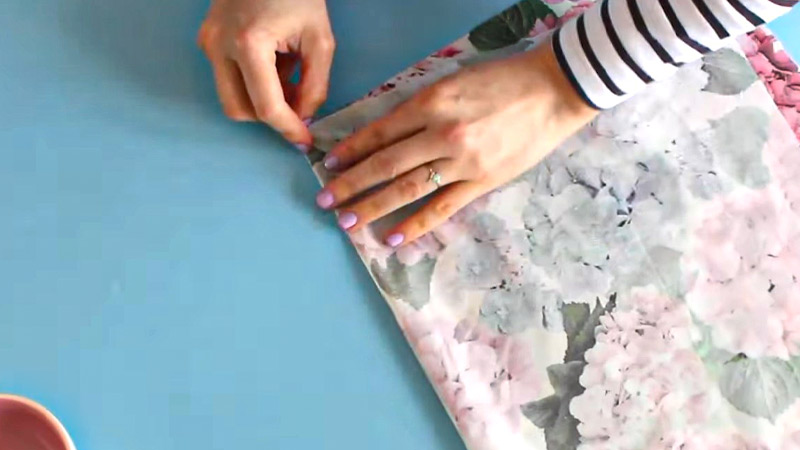
Fold the fabric along the seam so that the right sides of the fabric are facing each other. In other words, the seam you just sewed should be enclosed within this fold, and the raw edges are hidden.
Wide Seam Allowance
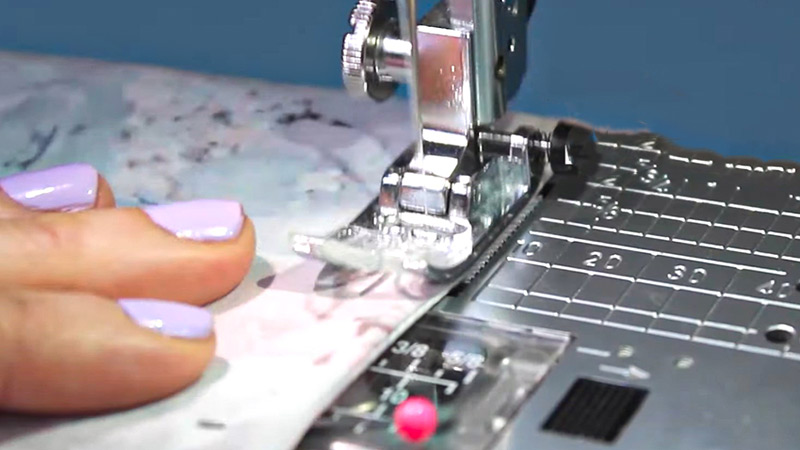
Sew a second seam along the folded edge with a wider seam allowance, typically around 3/8 inch (10mm). This new seam will encase the raw edges from the first seam, creating a neat and enclosed seam.
Press Again
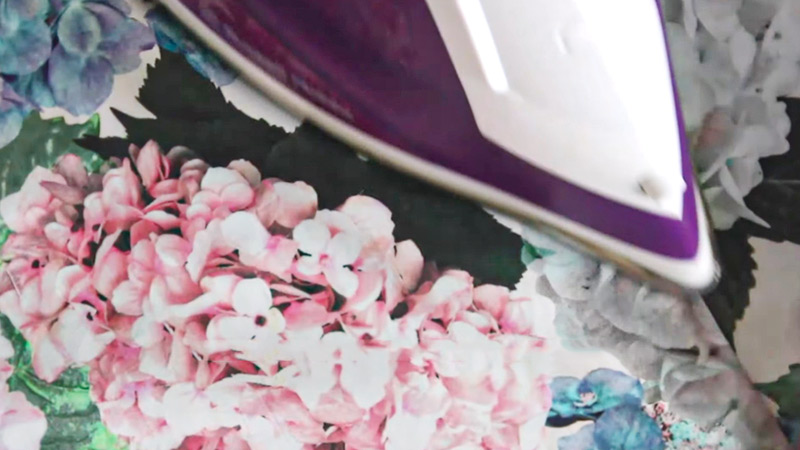
After sewing the second seam, open up the fabric, and press the French seam to one side or press it open, depending on your preference.
Use the iron to ensure the seam is flat and well-defined. This final pressing step gives the French seam a clean and polished appearance.
Trim Excess Threads
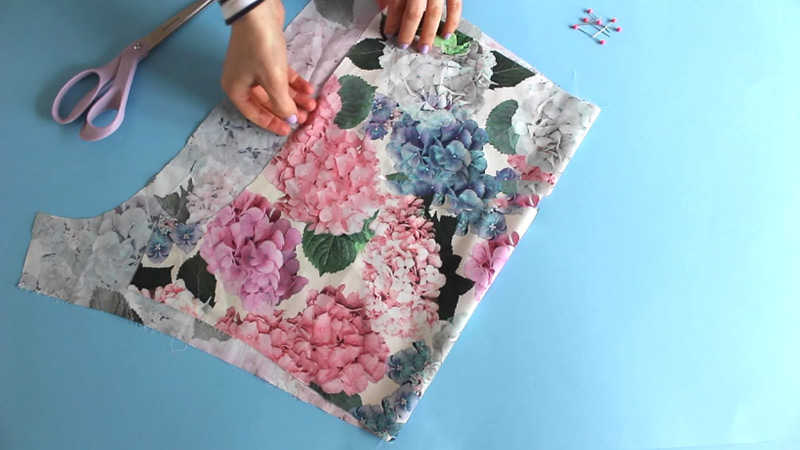
To finish, trim any excess threads or loose ends from your French seam. This step ensures a tidy and professional-looking result.
French Seam Advantages
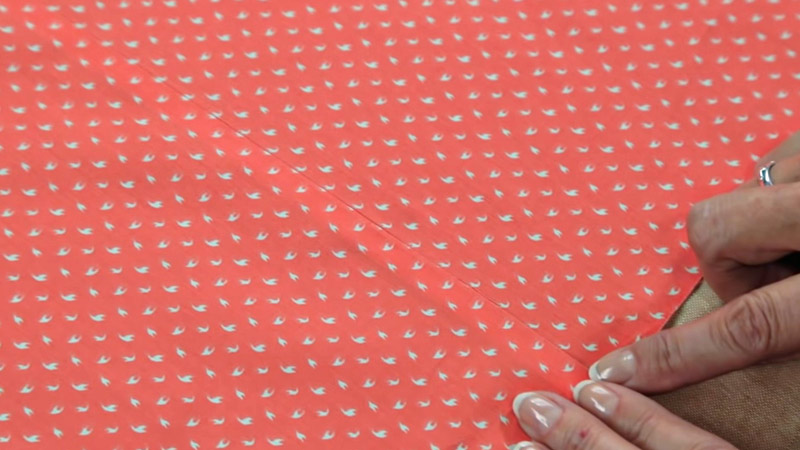
French seams offer several advantages in sewing, making them a popular choice for finishing seams, especially when working with lightweight or delicate fabrics.
Here are the key advantages of French seams:
Clean and Polished Finish
French seams conceal raw fabric edges within the seam, providing a neat and tidy appearance on both the inside and outside of the garment. This polished finish adds a touch of professionalism to your sewing projects.
Prevents Fraying
One of the primary purposes of a French seam is to prevent fabric from fraying along the seam allowance.
This is particularly crucial when working with lightweight or delicate fabrics that are prone to unraveling.
Minimizes Bulk
French seams are excellent for reducing bulk within a seam, as the raw edges are enclosed in the second seam.
This is especially important when sewing with lightweight or sheer fabrics, ensuring the seam remains inconspicuous.
Durable
The double stitching in a French seam enhances the seam’s durability, making it less likely to come apart over time, even with frequent washing and wearing.
Professional Look
French seams are commonly used in high-end and couture fashion because of their ability to give garments an elegant and refined interior finish. They are ideal for clothing items where the inside is as important as the outside.
No Need for Additional Finishing
Unlike other seam types that may require serging, zigzag stitching, or pinking to prevent fraying, French seams eliminate the need for additional finishing techniques. This simplifies the sewing process and yields a clean result.
Suitable for Sheer Fabrics
French seams are particularly well-suited for sheer or transparent fabrics where the seam allowance might otherwise be visible through the fabric. The enclosed seam creates a seamless look.
Versatile
While commonly associated with lightweight fabrics, French seams can also be used in medium-weight fabrics for a tidy finish.
They are adaptable to various sewing projects, from clothing and lingerie to home decor items like curtains and pillowcases.
French Seam Uses
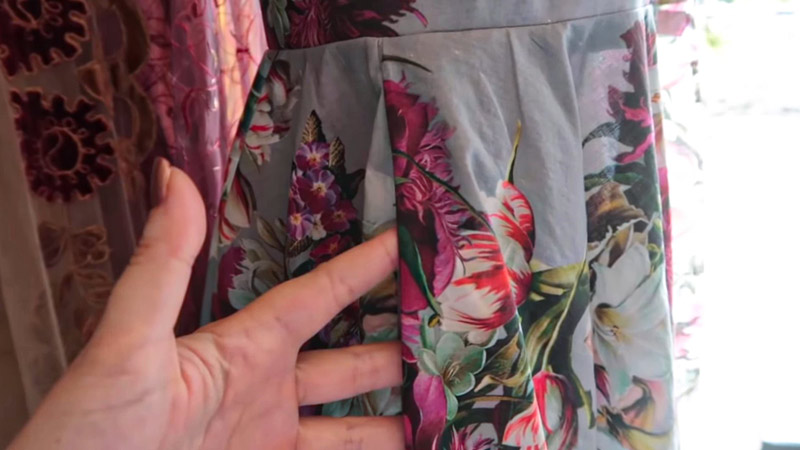
French seams are widely used in sewing for various purposes, particularly when working with lightweight and delicate fabrics.
Here are some common uses for French seams:
Sheer and Lightweight Fabrics
French seams are ideal for fabrics like chiffon, organza, silk, and lightweight cotton, where traditional seams can create unsightly bulk or damage delicate fibers. The encased raw edges in French seams prevent fraying and ensure a polished look.
Lingerie and Undergarments
French seams are commonly employed in lingerie and undergarment construction. These seams provide a smooth and comfortable finish that reduces irritation against the skin.
Children’s Clothing
French seams are often used in children’s clothing, especially for dresses, blouses, and lightweight summer garments. They ensure that seams are not scratchy or uncomfortable against a child’s sensitive skin.
Home Décor
When sewing items like sheer curtains, pillowcases, or lightweight drapes, French seams offer a clean and professional appearance. They also prevent fraying along the edges of these fabric items.
Formalwear and Bridal Attire
Garments designed for special occasions, such as wedding dresses and evening gowns, often use French seams to maintain a sleek, elegant, and seamless look.
Quilting
While quilts usually employ other seam finishes, French seams can be used to join quilt backing fabric to create a clean, finished edge on the inside of the quilt.
Costumes
When sewing costumes for theater productions or cosplay, French seams can be used to create a polished appearance, even when using unconventional or delicate fabrics.
Historical Reproductions
Sewing historical clothing replicas often requires precise and historically accurate finishes. French seams can be a suitable choice for creating period-authentic garments.
Sewing for Charity
When making items for donation, such as baby clothes, blankets, or quilts, French seams are an excellent choice to ensure durability and comfort for the recipients.
FAQS
Can I use a French seam on heavy fabrics?
No, french seams are best suited for lightweight and delicate fabrics.
Do I need a special sewing machine for French seams?
No, you don’t need a special sewing machine for French seams. Any standard sewing machine with a straight stitch setting can be used to create French seams.
Can I use French seams on curved seams?
While French seams are commonly used on straight seams, they can be adapted for gently curved seams.
Can I use French seams for quilting?
French seams are not the typical choice for quilting, as quilting often involves multiple layers of fabric and batting.
Give a French Seam Example.
In a French seam example, imagine sewing two panels of sheer silk fabric for a delicate blouse; first, you stitch them with wrong sides together, trim the seam allowance, press, then fold them with right sides together and sew another seam, resulting in concealed raw edges for a polished finish.
What Is French Seam in Sewing Clothes?
A French seam in sewing clothes is a technique where the raw edges of a seam are enclosed within two lines of stitching, creating a clean and neat finish on both the inside and outside of the garment, often used for lightweight and delicate fabrics.
What is French seam stitch?
A French seam stitch is a sewing technique that involves sewing two lines of stitches to encase raw fabric edges within the seam, creating a clean and polished finish on both the inside and outside of the fabric.
To Recap
The French seam is a versatile and invaluable technique in the realm of sewing. It embodies the pursuit of perfection, ensuring that garments, especially those crafted from delicate or lightweight fabrics, exhibit a polished and professional appearance.
By concealing raw edges within the seam, it guards against fraying and enhances durability. Its application extends across a spectrum of projects, from elegant evening gowns to dainty lingerie, ensuring a neat finish both inside and out.
Whether for practicality, aesthetics, or historical accuracy, the French seam stands as a testament to the artistry and craftsmanship inherent in the world of sewing, elevating creations to a level of refinement that sets them apart.
Leave a Reply